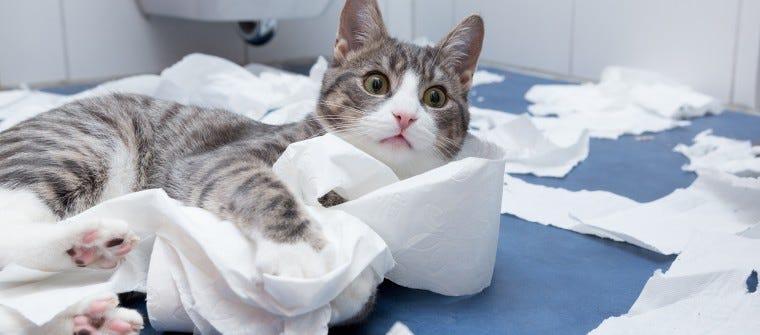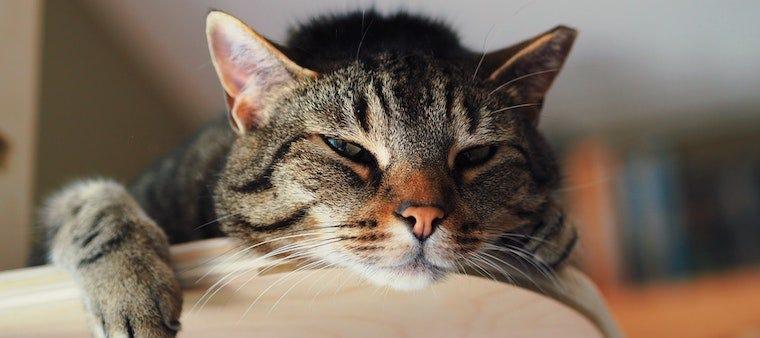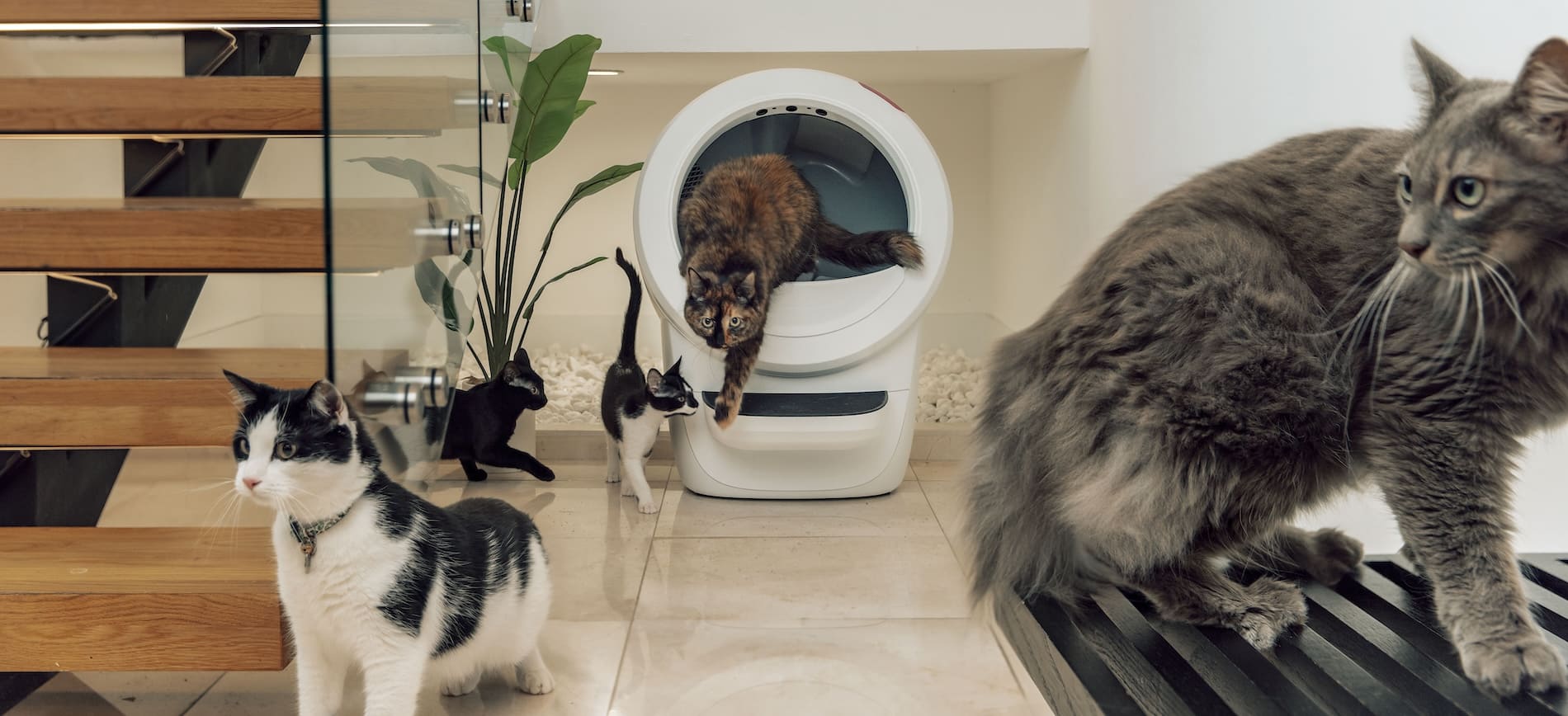Cats are very clean creatures—that is, they spend a great deal of time grooming themselves and one another (maybe even half of their waking hours). Unfortunately, that cleanliness doesn't always carry over to the litter box. If your indoor cat eliminates outside the box, it's more than a mess to clean up, it's a cause for concern.
Urinating and defecating outside of the litter box can be a sign of mental distress, physical illness, or neglect. Let’s run down a list of problems associated with poor litter box habits and find out what you can do to solve them.
1. Problem: Your cat is intact (not fixed)
If your kitten was using the litter box consistently, but started urinating around the house around seven months of age, he is likely beginning to mature and mark his territory.
Solution: Make an appointment for your cat to get spayed or neutered. Spaying and neutering helps control the cat population overall (fewer homeless cats), but it’s also beneficial to the lifespan of a cat who is lucky enough to have a home already. Getting a cat fixed reduces its desire to roam and mark territory (which is a reproductive endeavor), and it may prevent the development of certain types of cancers later in life.
2. Problem: Your cat is sick
Urinary tract infections, bladder infections, arthritis, inflammatory bowel disease, and other illnesses can cause mishaps around the house. If your cat seems agitated or visits the litter box frequently without eliminating, infection or inflammation could be the culprit.
Solution: Make an appointment with your veterinarian as soon as possible. Symptoms of most of these illnesses can be improved or reversed with proper treatment. Medication and/or dietary adjustments may be all your cat needs to get back in the box.
Arthritic cats or other senior cats may need a more accessible litter box. For cats who have difficulties going up and down stairs, make sure to have a litter box on each floor of your home and make sure the entrances are low or gradual enough for them to enter with ease.
3. Problem: Your cat doesn’t feel safe
Temperature, noise level, and the amount of activity in the area might be making your cat nervous about using the litter box. If you have multiple cats, it’s also possible that one has dominated the box, prohibiting the other cat/s from using it.
Solution: Place the litter box in a place that’s far enough away from their feeding area, appliances that make noise (water heaters, dishwashers, AC units), and isn’t heavily trafficked by humans. A quiet space that is accessible to your cat and a little secluded (such as a guest bedroom or bathroom) may solve the problem.
If you can chalk it up to another cat claiming the box, add extra litter boxes around the house, and make sure there is plenty of space between each of them. Be patient—it could take time for the submissive cat to come around to a new, neutral litter box.
4. Problem: The litter box is not properly maintained
If you’re not scooping the litter box at least every other day, it’s possible that your cat has been waiting around for you to clean it up. Humans aren’t the only ones that dislike a smelly, dirty litter box; in fact, cats are probably more offended by it than we are.
A cat can only wait so long for a clean place to go, which often results in an accident. This is a very serious problem, as making a cat hold their waste by not providing a clean space for them to eliminate can make them very sick.
Solution: Scoop out the litter box every day. Stick with a brand of litter you know your cat will use, and wash or replace the box as necessary. If you find yourself failing over and over at keeping the litter box clean enough for your cat, look into a self-cleaning litter box.
5. Problem: Your cat doesn’t approve of the litter box type or depth
With cats, the devil is in the details, and there are various factors that could be causing them to turn away from the box. Any cat, regardless of general disposition, can become averse to scented litter, hoods, and liners, on top of being choosy about how deep the cat litter is.
Solution: Experiment with your setup until your cat shows renewed interest. If the current litter box is an enclosure, purchase a simple open-top and see if your cat prefers that.
The litter bed should be two-to-three inches deep, but you can create a slope in the box to see which depth works best. If you suspect that you need to choose a new type of litter, go for finer particles that are not strongly scented.
Final Tip
To help prevent your cat from returning to the “scene of the crime,” take extra care to clean up previous accidents. Use enzymatic cleansers, baking soda, and products that are labeled as pet odor neutralizers, but not ammonia or vinegar.






